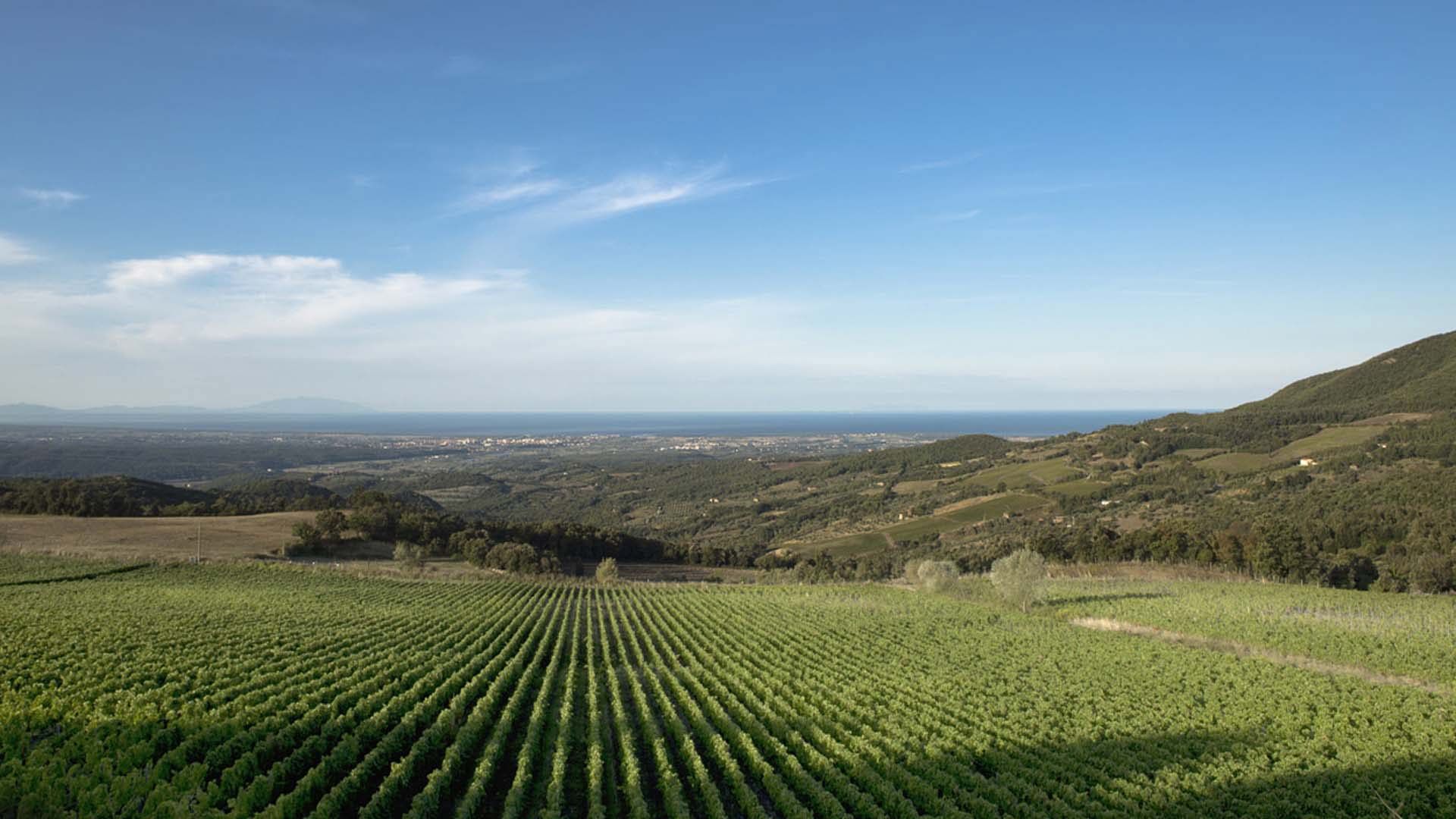
Riparbella, the coastal Super Tuscans’ kingdom
Riparbella, situated in the verdant hills of Tuscany’s Pisa province, is a town that dates back to 1034. Named after the sandy white tufa soil concentrated here, Riparbella boasts a breezy microclimate that is attributed to the adjacent Mediterranean coastline and ever-present sunshine, which impact the expression of the various grapes notably grown in Riparbella.
Because Riparbella spans from the coastline of Tuscany to the rolling hills high above sea level, the wineries here are characterized by gradual growing seasons in which the harvest can begin as soon as September. Furthermore, the ocean breezes and changes in temperature lead to a natural, steady maturation for the grapes on the vines—a quality of Riparbella that adds a certain balance to the wines produced here.

In the attempt to find an identity for this little wine region, so peculiar from a climatic and geological point of view and inspired by the Super Tuscan movement, the most prestigious Riparbella’s wineries decided to focus on international varieties, that thrive well here (Cabernet Sauvignon, Cabernet Franc, Syrah, Petit Verdot, Merlot).
With the San Francisco Wine School crew (visiting Italy during a wine cruise across the Mediterranean), I visited three wineries and had the chance to taste their best wines. Overall the quality is very high, each company focused on the varieties that do better in their particular microclimate and terroir with spectacular, elegant results. Below the history and characteristics of each winery, enjoy also the Youtube video linked at the end of this article for a sip of Tuscany!

Riparbella wineries
Caiarossa

Named for both the deep red-colored soil and as an homage to Gaia, the mother of all gods of Mount Olympus and the goddess of fertility and nature, Caiarossa began in 1998 when the original 30 hectares of land were acquired. The then owner of Caiarossa originated the foundation that still lives on today, including the designation of the land and organization of the cellar according to the principles of Feng Shui, as well as the various standards maintained for biodynamic and organic farming. It was not until 2004, the year when Caiarossa was purchased by Eric Albada Jelgersma, that the winery expanded into the now 70 hectares it is today.

Located in the Val di Cecina and along the southern slopes of Poggio di Nocola, Caiarossa winery sits approximately 600 meters above sea level. Caiarossa, influenced by its sister properties in Bordeaux—Château Giscours and Château du Tertre—cultivates Bordeaux-style grapes to create distinctive blends that characterize the Riparbella terroir. One such blend, the Caiarossa IGT Toscana Rosso, is the “purest expression of [their] vineyards” in that it combines the seven varieties of grapes grown here to unite the complexities and nuances of their biodynamic farming with the terroir. So that there is as minimal human intervention as possible, the winery is also gravity fed.

Wines produced and characteristics here


Prima Pietra

Tenuta Prima Pietra, known as the highest vineyard along Tuscany’s coast (450 meters above sea level), is a certified organic winery that was founded in 2002. The first estate purchased by Massimo Ferragamo of the Ferragamo fashion family, Prima Pietra began its first harvest in 2007. It was not until 2017, however, that the first certified organic Prima Pietra wine was entirely cultivated, harvested, and refined on this estate.

Prima Pietra’s very deep soil is concentrated with clay, fossils, and gabbro, a rock indigenous to this area. Each of these soil components impart various characteristics needed to realize the complexities of the wine produced here. Because the soil is quite deep, the water is retained well and is supplied to the vines when the weather is hot and dry—especially since the vineyards are susceptible to direct sunlight.

The Prima Pietra single-label wine is comprised of a blend of the estate’s Merlot, Cabernet Sauvignon, Cabernet Franc, and Petit Verdot grapes. Accordingly, each varietal will ferment on its own for 20 days before the wine is refined in French oak barrels for 18 months and subsequently blended for 8 more months.

Duemani
Established in 2000 by husband and wife Luca D’Attoma and Elena Celli, Duemani winery spans across 10 hectares of land that is divided into four vineyards—two designated for Cabernet Franc, one for Merlot, and one for Syrah. Additionally, their winery employs biodynamic farming methods for its exclusively coastal-facing vineyards.

Luca and Elena created this winery in Riparbella because of the ideal growing conditions for their favorite grapes—Cabernet Franc, Merlot, and Syrah—and the minerality of the soil here. As evidenced with the above-mentioned Riparbella wineries, the microclimate established here due to the proximity of the breezy Tuscan coastline and the influence of the sunlight produce an environment in which each of these grapes can further express the character of the terroir. Furthermore, biodynamic farming allows Duemani to maintain high-density vineyards according to the nature of the vineyards without sacrificing the flavors.

The signature wines produced by Duemani include their namesake Duemani wine, which is a red wine comprised solely of Cabernet Franc, and their Altrovino wine, which is a red wine blend of Cabernet Franc and Merlot. Unique to this winery, Duemani does not employ any fining or filtration to their winemaking process.



